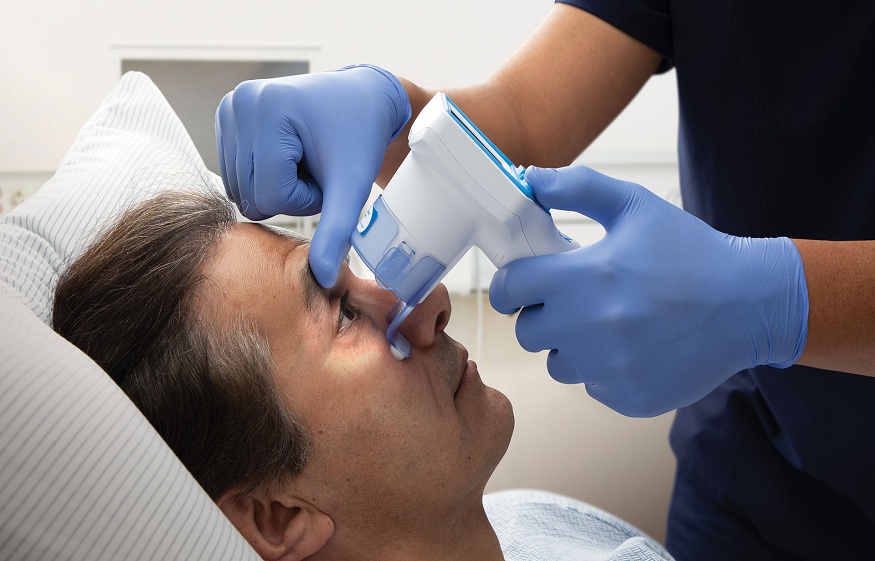Welcome to the exciting world of neurology, where modern technological advancements are revolutionizing traditional methods. One such groundbreaking development is utilizing the Neurological Pupil Index (NPi) in pupil diameter measurement.
This blog post highlights how this innovative tool reshapes neurological examinations and enhances our understanding of the human brain. Let’s embark on this journey, exploring the importance of NPi to neurology, its definition, implementation, and more.
Defining NPi (Neurological Pupil Index)
The Neurological Pupil Index, or NPi, is a numerical expression of the pupillary light reflex, offering quantitative data instead of traditional qualitative observations. The NPi scale extends from 0 to 5, where a score of 3 or more generally indicates a normal response, while scores below 3 signify potential neurological impairment.
This system streamlines pupil diameter measurements, providing objectivity and precision indispensable for reliable neurological assessments.
Importance of Pupil Diameter in Neurology
In neurology, pupil diameter is critical, providing a window to our neurological health. From assessing cerebral perfusion to detecting alterations in intracranial pressure, it forms an integral part of the comprehensive neuro exam.
The pupillary response can disclose invaluable information about a patient’s condition, making precise and regular monitoring essential. As such, accurate and consistent tools, like the pupilometer, are paramount.
Limitations of Traditional Measurements
Traditional methods for pupil diameter measurement have their drawbacks. Manual measurements can be plagued by observer bias, inaccuracy, and varying degrees of subjectivity, especially in patients with abnormal pupil sizes or irregular shapes.
Equipment inconsistencies can further exacerbate these issues, raising the risk of misdiagnoses. This has fueled the quest for more reliable neurological tools, with NPi as a hopeful beacon.
Advantages of NPi in Pupil Diameter Measurement
Implementing NPi in pupil diameter measurement brings a host of benefits. It eliminates observer bias, delivering precise measurements grounded in objective numerical data. This enhances the ability to detect nuanced changes in pupillary response during critical conditions, providing a robust foundation for more reliable diagnostic decisions.
It greatly assists in the ongoing management and treatment of neurological cases by enabling trend monitoring and comparisons over time. By generating exact measurements and simplifying interpretation, NPi improves neurological care quality, making it a game-changer in the field.
Implementing NPi in Clinical Settings
Integrating NPi into pupillometers presents a straightforward, streamlined workflow for clinicians. This high-tech tool simplifies documentation and data management, facilitating efficient and effective patient care. With these advancements, medical professionals can leverage the advantages of NPi, significantly improving the pupil exam process and overall patient experience.
The Science and Research Behind NPi
Scientific studies support NPi’s advantages over traditional methods. Numerous past and ongoing research initiatives confirm its effectiveness in providing more precise and consistent measurements. As we delve deeper into the technology, the potential for product and software innovation expands, promising even more sophisticated tools for neurology.
NPi’s Potential Impact on Patient Outcomes
The potential impact of NPi on patient outcomes is substantial, marking a pivotal advancement in neurological healthcare. Enhanced diagnostic accuracy, stemming from objective, numerical data, leads to more precise, timely, and effective treatment decisions. It allows for continually accurately monitoring critically ill patients, particularly in neuro-intensive care units.
This optimization in monitoring reduces the likelihood of misdiagnosis and facilitates allocating resources based on patient needs. Beyond immediate treatment, using NPi enables long-term patient management, significantly improving the overall quality of care. In this way, NPi can potentially revolutionize patient outcomes in neurology.
Real-world Applications and Scenarios
NPi’s utility extends to diverse clinical scenarios, from patients with traumatic brain injuries and strokes to those in intensive care units. Its versatile functionality adapts to various clinical settings, highlighting its essential role in modern neurological care.
Conclusion:
NPi represents a paradigm shift in pupil diameter measurement. It revolutionizes neurology by improving diagnostic accuracy and offering a refreshing perspective on neurological evaluations. As medical professionals, embracing and incorporating this innovative tool into our practice opens up a world of potential for more precise, effective patient care. We stand on the precipice of a new era in neurology, poised to leap forward into the future of medicine.




